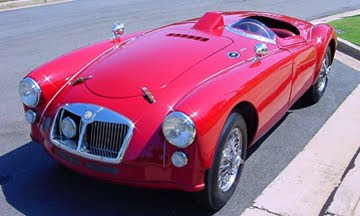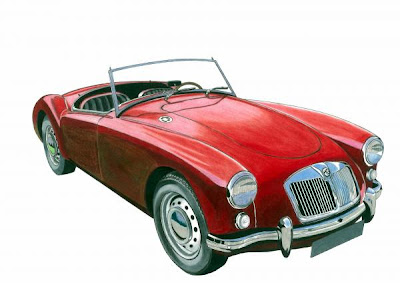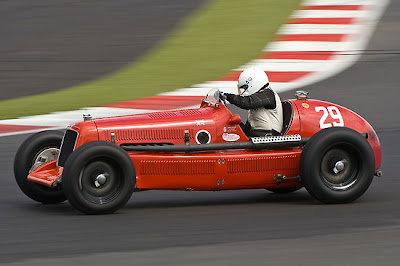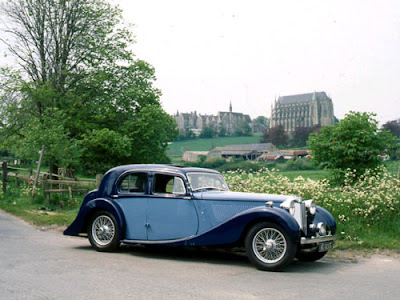MG ZT 190
MG ZT Full-Size Cars
MG ZT 190
MG ZT Full-Size Cars
The MG ZT is a high-performance MG-branded version of the Rover 75 executive car, produced by MG Rover at their Longbridge plant in Birmingham from 2001 to 2005. An estate version, the MG ZT-T, was also available. Styling is similar to the 75, although uprated springs and chassis modifications make for a far firmer ride. Production of the cars ceased in 2005 amidst financial turmoil at MG Rover.
A Full-Size Cars is a marketing term used in North America for an automobile larger than a mid-size car. In the United States, the EPA uses "large car" to denote full-size cars.
Full-size cars are usually denoted for their length, nearing 5,000 mm (197 in) in basic sedans, with luxury models often tending to reach 5,250 mm (207 in). Previously, a wheelbase greater than 2,790 mm (110 in) was the criterion. The term first appeared in the early 1960s to define what also became known as "standard" size cars from the new compact and intermediate models then being introduced. Full-size is also defined in space measurement as greater than 3,300 L (120 ft³) of interior volume.
Use of the term in North America became popular (and necessary) after the introduction of compacts by the US "Big Three" for the 1960 model year, and then a few years later the introduction of what became known as mid sized cars. While length and wheelbase varied (increasing over time) being considered full sized required a width as close as practical to the 80 inch width limit over which the federal government required vehicles to have clearance lights. The term was most correctly applied to cars close to the width limit carrying nameplates of "The Low Priced Three", Chevrolet, Ford, and Plymouth.
Manufacturers hoped their slightly more expensive brands such as Pontiac, Mercury, and Dodge, would be perceived by the public as more desirable than a full sized car even in situations where they weren't any larger. But while the difference between a full sized car, a basic large Chevrolet, Ford, or Plymouth, and a luxury car such as Cadillac, Lincoln, or Imperial, was clear, both manufacturers and consumers had difficulty classifying those in between, such as large Pontiacs, Mercurys, or Dodges. Manufacturers contributed to the lack of distinction by reaching into the lower price ranges with what had previously been considered medium priced brands.
For 1977, General Motors downsized its full-sized (and higher priced) cars, with overall width cut from approximately 80 inches to the mid-70 inch range. Chevrolet, Pontiac, and the less expensive Oldsmobile and Buick models had a 116 inch wheel base. More expensive Oldsmobile and Buick models, plus the Cadillac had a 119 inch wheelbase but no more width. The cars sold less well than the 1976 models. GM and Chrysler downsized for 1979, Chrysler even building its downsized car on a modified version of its long running mid size platform, which was comparable in size to the new platforms designed by GM and Ford. By this time, a huge increase in gasoline prices had made it difficult to sell any large cars, downsized or not. Chrysler had the huge misfortune of introducing two consecutive new designs of its largest cars, in 1974 and 1979, during times when gasoline prices suddenly increased.
EPA interior and trunk volume categories for the most part resulted in mid size, full size, and luxury cars common in the mid 70s all being classified as large cars. The 80s Plymouth Gran Fury, Dodge Diplomat, and Chrysler Fifth Avenue, classified as large cars at the time, were derived from the Dodge Aspen and Plymouth Volare, originally marketed as compacts.
While many modern cars are referred to as full size, they don't qualify for the term as used in the 60s and 70s. Consumer acceptance of large SUVs approaching 80 inches in width shows interest remains in vehicles capable of three across seating with reasonable comfort, a strong point of a true full size car. A true full sized car produced with today technology, would provide this functionality with the additional advantages of better handling and fuel economy due to being lower than a large wide SUV.
A Full-Size Cars is a marketing term used in North America for an automobile larger than a mid-size car. In the United States, the EPA uses "large car" to denote full-size cars.
Full-size cars are usually denoted for their length, nearing 5,000 mm (197 in) in basic sedans, with luxury models often tending to reach 5,250 mm (207 in). Previously, a wheelbase greater than 2,790 mm (110 in) was the criterion. The term first appeared in the early 1960s to define what also became known as "standard" size cars from the new compact and intermediate models then being introduced. Full-size is also defined in space measurement as greater than 3,300 L (120 ft³) of interior volume.
Use of the term in North America became popular (and necessary) after the introduction of compacts by the US "Big Three" for the 1960 model year, and then a few years later the introduction of what became known as mid sized cars. While length and wheelbase varied (increasing over time) being considered full sized required a width as close as practical to the 80 inch width limit over which the federal government required vehicles to have clearance lights. The term was most correctly applied to cars close to the width limit carrying nameplates of "The Low Priced Three", Chevrolet, Ford, and Plymouth.
Manufacturers hoped their slightly more expensive brands such as Pontiac, Mercury, and Dodge, would be perceived by the public as more desirable than a full sized car even in situations where they weren't any larger. But while the difference between a full sized car, a basic large Chevrolet, Ford, or Plymouth, and a luxury car such as Cadillac, Lincoln, or Imperial, was clear, both manufacturers and consumers had difficulty classifying those in between, such as large Pontiacs, Mercurys, or Dodges. Manufacturers contributed to the lack of distinction by reaching into the lower price ranges with what had previously been considered medium priced brands.
For 1977, General Motors downsized its full-sized (and higher priced) cars, with overall width cut from approximately 80 inches to the mid-70 inch range. Chevrolet, Pontiac, and the less expensive Oldsmobile and Buick models had a 116 inch wheel base. More expensive Oldsmobile and Buick models, plus the Cadillac had a 119 inch wheelbase but no more width. The cars sold less well than the 1976 models. GM and Chrysler downsized for 1979, Chrysler even building its downsized car on a modified version of its long running mid size platform, which was comparable in size to the new platforms designed by GM and Ford. By this time, a huge increase in gasoline prices had made it difficult to sell any large cars, downsized or not. Chrysler had the huge misfortune of introducing two consecutive new designs of its largest cars, in 1974 and 1979, during times when gasoline prices suddenly increased.
EPA interior and trunk volume categories for the most part resulted in mid size, full size, and luxury cars common in the mid 70s all being classified as large cars. The 80s Plymouth Gran Fury, Dodge Diplomat, and Chrysler Fifth Avenue, classified as large cars at the time, were derived from the Dodge Aspen and Plymouth Volare, originally marketed as compacts.
While many modern cars are referred to as full size, they don't qualify for the term as used in the 60s and 70s. Consumer acceptance of large SUVs approaching 80 inches in width shows interest remains in vehicles capable of three across seating with reasonable comfort, a strong point of a true full size car. A true full sized car produced with today technology, would provide this functionality with the additional advantages of better handling and fuel economy due to being lower than a large wide SUV.
Related : MG ZT Full-Size Cars From Wikipedia, the free encyclopedia, MG ZT 190
















 7:38 AM
7:38 AM
 Goohara
Goohara



















